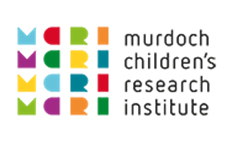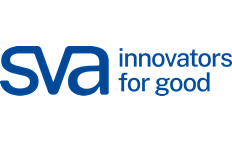How service reform can help break the cycle of disadvantage for children
- Published
- Wednesday, July 3, 2024 - 12:00 PM
This article originally appeared as an opinion-editorial piece in Croakey Health Media.
Introduction by Croakey: Nearly twenty percent of Australian children entering preschool live in the most disadvantaged areas of Australia, according to ‘Australia’s Health 2024‘ published this week by the Australian Institute of Health and Welfare.
The social determinants of health section of the report also shows that children living in the lowest socioeconomic areas were more likely to be developmentally vulnerable – based on the Australian Early Development Census (AEDC) domains – than children living in the highest socioeconomic areas (33 percent and 15 percent respectively).
Possibly a symptom of growing inequalities and the pressures of the cost-of-living crisis, the report shows that the proportion of children between two and 17 years meeting the recommended fruit and vegetable intake has decreased since 2017-18 – from six percent to 4.3 percent of children. Also, the proportion of 5 to 17 year olds living with obesity or overweight increased from 25 percent in 2017-18 to 28 percent in 2022.
Meanwhile, child health and policy expert Professor Sharon Goldfeld writes below that offering Australian families high-quality social, health and education services from the antenatal period through to the early school years can help break cycles of disadvantage.
Goldfeld, from the Murdoch Children’s Research Institute and The Royal Children’s Hospital, says disadvantage is a “preventable health challenge that can be addressed almost right away” if “existing services are delivered equitably, fairly, and in a timely, appropriate way for the people that need it most”.
Following article by Prof Sharon Goldfeld AM.

Photo by Ben Mack on Pexels.
Combining services and strategies already established in social, health and educational systems – a concept called “stacking” – can amplify the impact of a single service.
In particular, our Centre for Community Child Health research team at Murdoch Children’s Research Institute (MCRI) has identified that delivering five key services and strategies together, in some combination, can lead to positive change for young children.
These include universal services of antenatal care, early childhood education and care and the early years of school and targeted programs such as sustained nurse home visiting and parenting programs.
The cumulative benefit of stacking is clear, with recent research showing that families can boost their learning and health outcomes from participating in two or more evidence-based services simultaneously.
Growing need
As Australia’s cost-of-living crisis continues to impact families, it is children who will be most affected.
In particular, children from lower socioeconomic backgrounds are at higher risk of poor mental health, developmental delays, family instability, chronic health issues and ongoing economic challenges.
Even before the current cost-of-living challenges, 68 percent of parents with children aged under five years in Australia were experiencing financial stress.
This is not a trivial issue, with an increasing number of children getting limited access to key services and falling behind in key developmental milestones by the time they start school.
These unjust, unfair, and avoidable differences continue into adulthood and define the health, development and wellbeing of our children.
Unfortunately, these stark differences have not shifted in over a decade.
Break the cycle
This is a preventable health challenge that can be addressed almost right away. If Australian families are offered high-quality social, health and education services from the antenatal period through to the early school years, we can help break cycles of disadvantage.
This can be achieved if existing services are delivered equitably, fairly, and in a timely, appropriate way for the people that need it most. In this space, early intervention is key.
We know that positive and supportive relationships in a child’s early years also directly relate to their ongoing developmental trajectory and positive life outcomes.
Important developmental gains can also be made when multiple early years services are available at once to children and families throughout the early years of life.
Instead of relying on a “silver bullet” solution, stacking utilises more of what our system already offers and ensures it can meet the unique needs of Australian families.
Stacking acknowledges that no single service offering can meet the needs for all families. And while positive outcomes from one service are fantastic, they are usually not enough to break entrenched cycles of disadvantage.
Every community in Australia has their own needs, so to make stacking work we will need to see fundamental shift to the way services are conceptualised.
Local data matters
Discussion in this space has recently been influenced by the Economic Inclusion Advisory Committee. This committee provides the Federal Government with independent advice regarding economic inclusion and tackling disadvantage – prior to the release of each Federal Budget.
Their latest recommendations include developing a national early childhood development system including support to access quality Early Childhood Education and Care services.
However, Australia’s early years systems will not reliably improve children’s outcomes until those involved in designing and delivering these fundamental services can utilise local, frontline data.
We can measure this through a “triple bottom line” which involves availability of services in sufficient quantity, high quality standard of delivery and participation of appropriate and relevant families.
While Australian families can access a number of key services some of the time, many face systemic barriers to regularly participate and benefit.
These include cost, transport, operating hours, cultural appropriateness or sensitivity, service quality, and family factors such as past trauma and service mistrust. These issues are often more frequent in outer suburban, rural, regional and remote communities.
Positive examples
The good news is that removing these barriers is an achievable prospect.
To determine the effectiveness of stacking we can utilise data from the Generation Victoria (GenV) project. This statewide birth and parent cohort has recruited over 120,000 participants and has the breadth and richness of information required to evaluate service interventions that other data sources cannot. These combined approaches to data can help drive better services and systems.
The Australian Early Development Census has helped communities identify where they need to take action to improve early childhood development outcomes in the medium term. This information is provided by teachers on all children starting school every three years.
We also see initiatives like Restacking the Odds supporting communities, service providers and policymakers to address service quality, quantity and participation through locally co-designed data and service improvement strategies.
Lastly, the South Australian Royal Commission into Early Childhood Education and Care has endorsed MCRI’s approach to stacking early years services in its final report. The Royal Commission recognised the need for a comprehensive and connected early childhood development system to support children and parents at all stages.
We want all Australians to recognise the importance of a comprehensive, connected approach to early childhood development and wellbeing. Right now, we have the foundational service infrastructure to make stacking achievable, especially with industry and government on board.
We now need deliberate action by policymakers, service providers and communities to help families break cycles of disadvantage and thrive. Our next generation depends on it.
This article originally appeared as an opinion-editorial piece in Croakey Health Media.
Restacking the Odds is a collaboration between the Centre for Community Child Health at the Murdoch Children's Research Institute, Bain & Company and Social Ventures Australia.
RSTO would like to acknowledge the support of project partners the Paul Ramsay Foundation and PALO IT.
We acknowledge the Traditional Owners of the land on which we work and pay our respect to Elders past, present and emerging.




